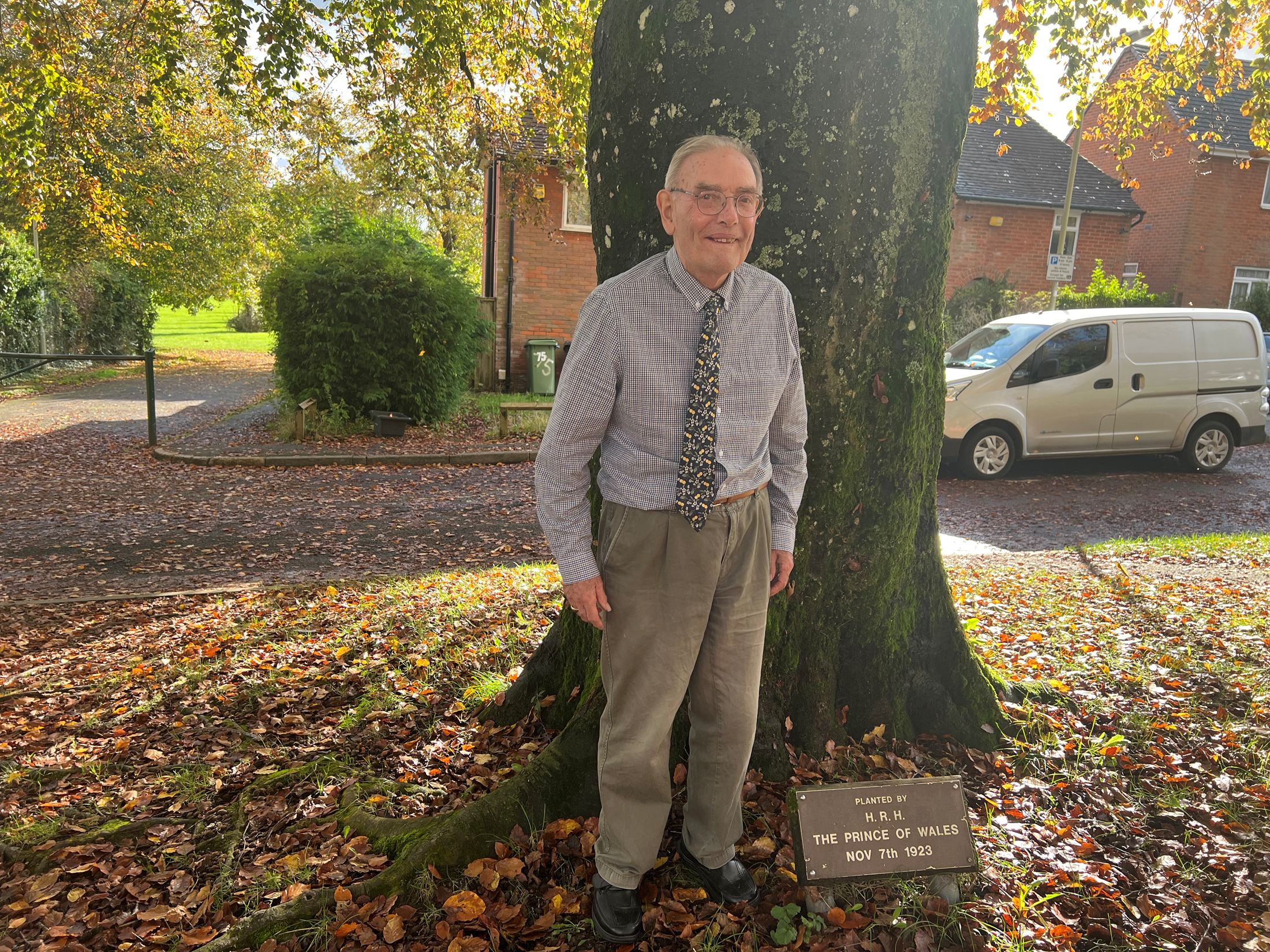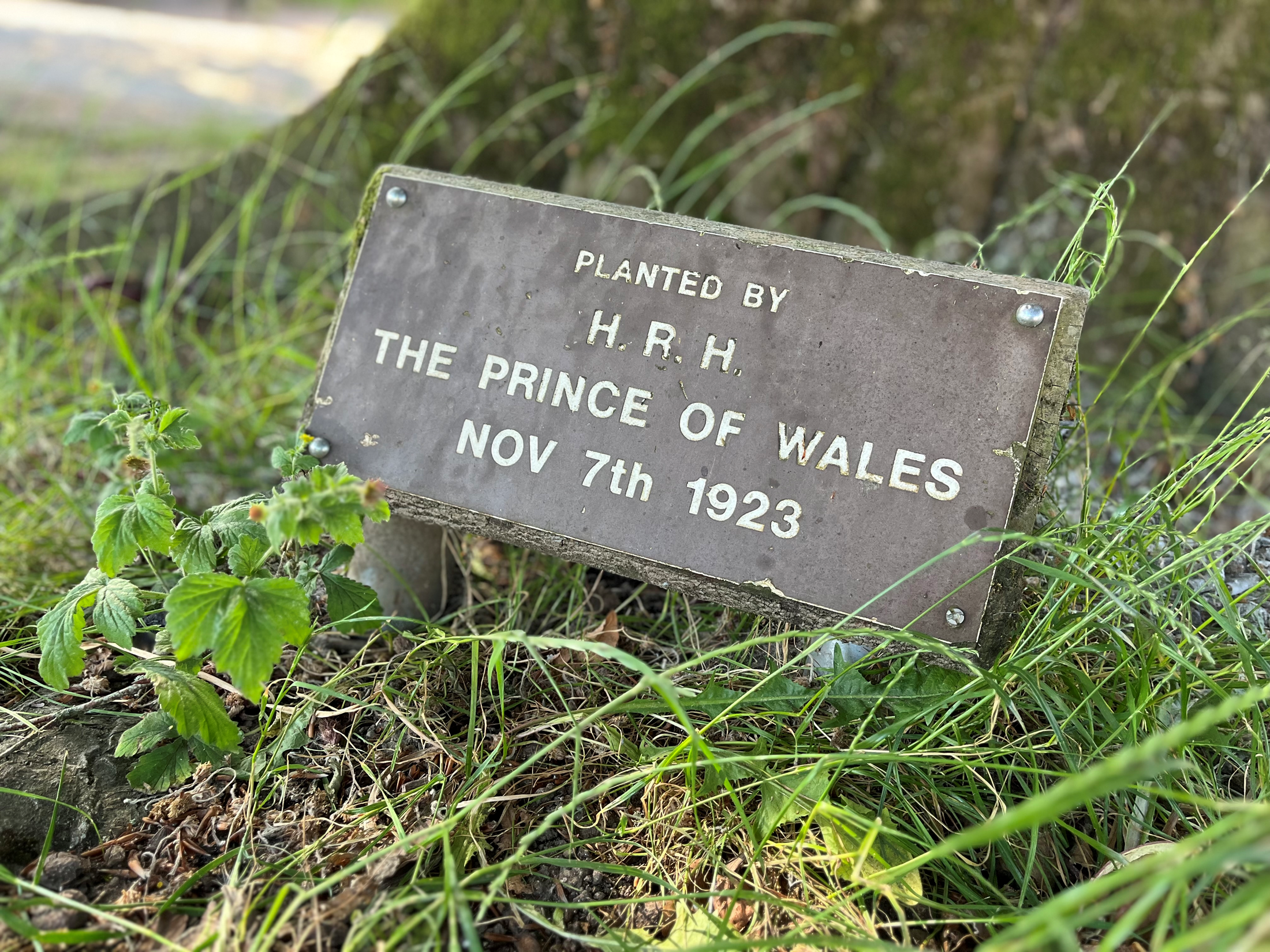A centenary of Stanmore – the area celebrates its 100th anniversary
Today, November 7, marks a very special anniversary for a local Winchester estate.
It is 100 years since a beech tree was planted in Stanmore marking the occasion of the official opening of the site for development.
The tree was planted in November 1923 by the then HRH the Prince of Wales, the man who would go on to become Edward VIII in 1936 before abdicating the throne the same year.

The tree can be found near the entrance to the recreation ground and it has a plaque at its base acknowledging its history.
The properties built in Stanmore were innovative for their time, with hot and cold water in their bathrooms.
Rod Youngman, a history enthusiast and long-time resident of Stanmore, regularly cleans the plaque. Speaking about the area over the years, Rod said:
“When the estate was first built, it created quite a sensation. The magazine Country Life, around June 1923, ran a feature on what they called the Winchester Garden Village.
“At the time, it was amazing; before that, working men’s houses weren’t like that at all.”
“I have seen huge changes in Stanmore over the years. I am so proud of living here and I am proud of the tree.”
You can read our full interview with Rod below.
Mayor of Winchester Cllr Angela Clear said:
“Stanmore is an important part of the Winchester community and, for many residents, the tree that stands as testament to its 100 year history is a landmark feature of the area.
“My thanks go to Mr Youngman for his tireless efforts in cleaning and preserving the plaque that denotes this very special tree, and for his dedication to the vibrant community that calls Stanmore home.”
Today, Stanmore continues to grow and, in 2022, 77 new social rent and shared ownership homes were completed by the council.
The new properties continue the theme of innovation that defined the estate’s earlier homes, with modern measures such as significant insulation, advanced draft-proofing, and heat-saving ventilation systems helping to reduce running costs for residents.
The addition of rooftop solar panels and electric vehicle charging points in the area mean that the development is at the forefront of the local authority’s efforts to become greener faster.
Cllr Chris Westwood, Winchester City Council Cabinet Member for Housing, added:
“The history of council housing in Stanmore is one of a strong community spirit and Mr Youngman’s care and attention really epitomises this.”
“The homes that were built in Stanmore all those years ago were noted for being ahead of their time and, as a council, we’re proud to have continued that tradition with the homes we created at The Valley offering a top standard of energy efficiency to their residents.”
The tree can be found at Cromwell Road near the entrance to the recreation ground and it has a plaque at its base acknowledging its history. We spoke to Stanmore resident and local historian Rod Youngman about its history.

Mr Youngman, 81, first moved to Stanmore in 1949 and attended the local school before eventually settling in Winchester later when his father was moved to a local naval base. He returned to the area in 1975 and moved to his current home beside the tree in 1980.
He said:
“The tree’s original plaque was stolen and I located it in an antique shop in Southampton. I rang the owner and he said that it had been sold so it’s around somewhere. I keep an eye on the current plaque and clean it regularly.
“I was lucky enough to get hold of the plan of the royal train from the day itself as the Prince of Wales travelled here via train - I worked on the railways at Winchester for 46 years and am interested in trains – which was only given to the people who needed to be ‘in the know’. I wish it could talk; what amazing history it has witnessed.
“The materials for building the houses also came by rail and a special siding, was established for the purpose but I have never been able to locate any images of it.
“When the estate was first built, it created quite a sensation. The magazine Country Life in or around June 1923 ran a feature on what they called the Winchester Garden Village. At the time, it was amazing; before that, working men’s houses weren’t like that at all. A delegation actually came from France to look at Stanmore with a view to building something similar there.
“Cromwell Road was the first area to be built and on the 100th anniversary of the King Alfred buses, two vintage buses were run along the first ever route up the road.
“I have seen huge changes in Stanmore over the years. I am so proud of living here and I am proud of the tree.
“There are a lot of students who live here now and I am grateful for them; I like the young people. We have some living right next door and I think that they initially think people don’t want them here but I like to lean over the fence and say ‘hello, where are you from?’ I bake a cake and take it round. I say let me know if you’re having a party - and if you’re having a barbecue, invite me round!”
